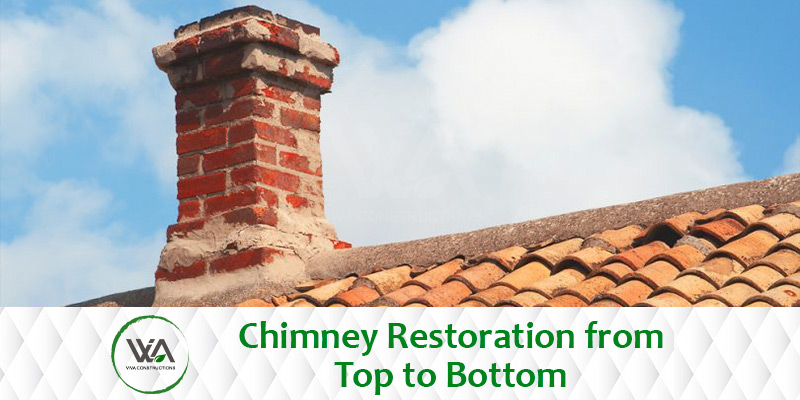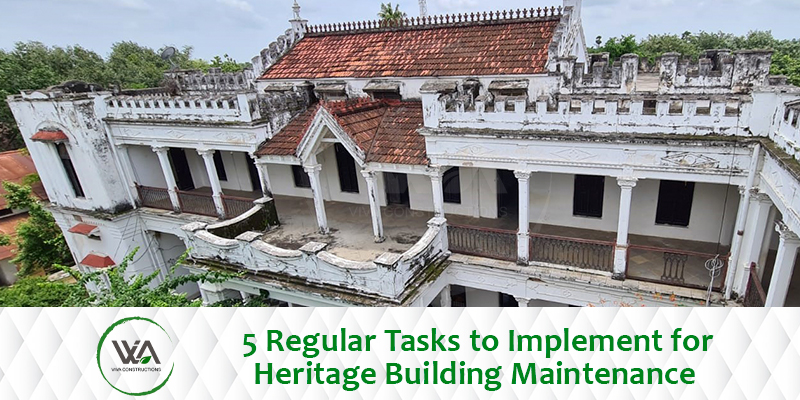You probably had plenty of free time over the past few months to consider home improvement projects. While you should be able to handle many small tasks on your own, it’s generally a good idea to leave chimney restoration to the experts. Here, we’ll go over every possible problem a homeowner might encounter while explaining the chimney restoration procedure from top to bottom.
Take the following as your maintenance and safety manual for chimneys:
Caps are Important for Chimney Restoration

The proper chimney cap should be used to maintain chimney safety (or cover). If a fire gets out of control, these tiny caps can stop sparks or flames from shooting out of the top of the chimney. Additionally, they prevent birds from constructing nests in the chimney gaps, which could obstruct ventilation. Chimney crowns provide similar protection for the chimney’s top. However, because some builders create these crowns using inexpensive mortar, they frequently need to be repaired.
How to Fix Faulty Flashing
When a chimney intersects a roof, two metal sheets are used as chimney flashing and are installed at the base of the chimney. Chimney flashing’s purpose is to keep moisture out of the vulnerable area where the chimney connects to the roof. Sadly, faulty flashing can cause more problems, including brick deterioration and a loss of structural integrity. Therefore, it’s crucial to fix and replace flashing as necessary.
Chimney Restoration in the Interior and Exterior
Sometimes the usefulness of a chimney may not be immediately apparent. It is because many chimney safety-related issues are simple to ignore. One of the dangers of creosote buildup is that it can make chimney fires burn extremely hot. But a thorough inspection is typically necessary to detect creosote inside the chimney. (This is another reason interior flue linings are crucial.) When lighting a fire, some homeowners might not notice loose bricks, deteriorated flue lining, or darkened smoke, which could be signs of dangerous chimney damage.
Water-Related Problems

Chimneys are particularly susceptible to water damage from prolonged exposure, just like any brick building is. Bricks that have sustained water damage over time may split, crack, and become loose. And whether this occurs on the inside or outside of a chimney, the building’s structural integrity might be in jeopardy. Also, newly constructed brick buildings typically last decades with little maintenance, and the mortar between bricks is more susceptible to erosion. As a result, tuck pointing or spot tuck pointing may be necessary for homeowners to fix potential chimney issues.
Tile and Base Cracks
Sturdy tiles should encircle the base of your chimney. The tiles around the fireplace could develop other problems in the chimney if they are cracked or damaged.
Fireplace Fires
If you don’t use your chimney frequently, regular upkeep is essential. It is due to the surprising frequency and predictably destructive nature of chimney fires. There are over 25,000 chimney fires annually.
It is advised that homeowners adhere to safety best practices when using their fireplace due to the risk of chimney fires. To make sure any significant issues can be found and fixed before regular use, they should also schedule several chimney inspections and cleanings, one before and one after the winter.
Message Us
At Viva Constructions, we’ve worked with businesses and homeowners in the Detroit metro area for many years. Our team is skilled and meticulous, and we only use the best masonry supplies when we take on a project. Give a call at +91 9360201439 to set up an appointment if your chimney needs to be inspected or if you need emergency chimney restoration assistance.



